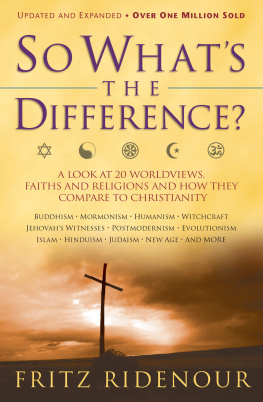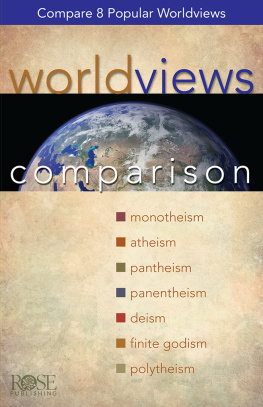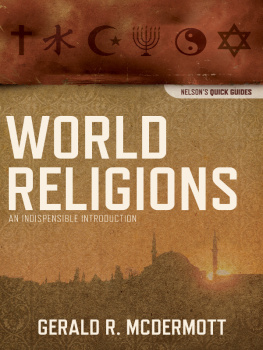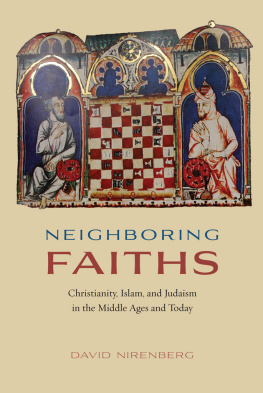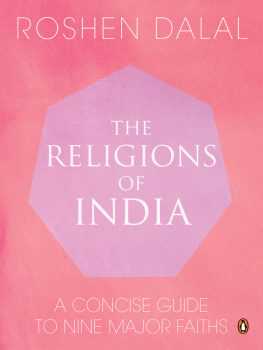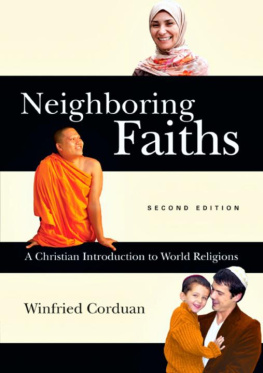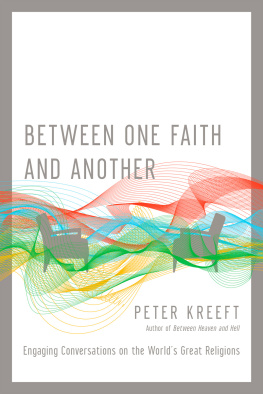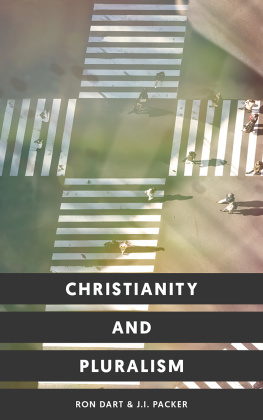Fritz Ridenour - So Whats the Difference
Here you can read online Fritz Ridenour - So Whats the Difference full text of the book (entire story) in english for free. Download pdf and epub, get meaning, cover and reviews about this ebook. year: 2001, publisher: Baker Publishing Group, genre: Religion. Description of the work, (preface) as well as reviews are available. Best literature library LitArk.com created for fans of good reading and offers a wide selection of genres:
Romance novel
Science fiction
Adventure
Detective
Science
History
Home and family
Prose
Art
Politics
Computer
Non-fiction
Religion
Business
Children
Humor
Choose a favorite category and find really read worthwhile books. Enjoy immersion in the world of imagination, feel the emotions of the characters or learn something new for yourself, make an fascinating discovery.
- Book:So Whats the Difference
- Author:
- Publisher:Baker Publishing Group
- Genre:
- Year:2001
- Rating:3 / 5
- Favourites:Add to favourites
- Your mark:
- 60
- 1
- 2
- 3
- 4
- 5
So Whats the Difference: summary, description and annotation
We offer to read an annotation, description, summary or preface (depends on what the author of the book "So Whats the Difference" wrote himself). If you haven't found the necessary information about the book — write in the comments, we will try to find it.
So Whats the Difference — read online for free the complete book (whole text) full work
Below is the text of the book, divided by pages. System saving the place of the last page read, allows you to conveniently read the book "So Whats the Difference" online for free, without having to search again every time where you left off. Put a bookmark, and you can go to the page where you finished reading at any time.
Font size:
Interval:
Bookmark:

1967, 1979, 2001 Fritz Ridenour
Published by Bethany House Publishers
11400 Hampshire Avenue South
Bloomington, Minnesota 55438
www.bethanyhouse.com
Bethany House Publishers is a division of
Baker Publishing Group, Grand Rapids, Michigan.
www.bakerpublishinggroup.com
Bethany House Publishers edition published 2014
ISBN 978-1-4412-6699-6
Previously published by Regal Books
Ebook edition originally created 2013
All rights reserved. No part of this publication may be reproduced, stored in a retrieval system, or transmitted in any form or by any meansfor example, electronic, photocopy, recordingwithout the prior written permission of the publisher. The only exception is brief quotations in printed reviews.
Library of Congress Cataloging-in-Publication Data is on file at the Library of Congress, Washington, DC.
All Scripture quotations, unless otherwise indicated, are taken from the Holy Bible, New International Version. Copyright 1973, 1978, 1984 by International Bible Society. Used by permission of Zondervan Publishing House. All rights reserved.
Other versions used are:
KJVKing James Version. Authorized King James Version.
NASBScripture taken from the New American Standard Bible, 1960, 1962, 1963, 1968, 1971, 1972, 1973, 1975, 1977 by The Lockman Foundation. Used by permission.
NLTScripture quotations marked (NLT) are taken from the Holy Bible, New Living Translation, copyright 1996. Used by permission of Tyndale House Publishers, Inc., Wheaton, Illinois 60189. All rights reserved.
PhillipsThe New Testament in Modern English, Revised Edition, J. B. Phillips, Translator. J. B. Phillips 1958, 1960, 1972. Used by permission of Macmillan Publishing Co., Inc., 866 Third Avenue, New York, NY 10022.
Cover and Interior Design by Robert Williams
Edited by Kathi Macias, Bayard Taylor, David Webb, Deena Davis
I NTRODUCTION
T ODAY THE D IFFERENCE M ATTERS M ORE THAN E VER

The goal of this revised, updated and expanded edition of So Whats the Difference? remains the same as it was when the first copies were printed 30 years ago: to spell out the differences between the historic Christian faith and other views represented in major religions, cults and ideologies that are vying for the hearts and minds of people today. And, to be sure, much in our society has changed since this book first appeared in the late 1960s.
The cultural center of America has shifted away from Christian, or at least Judeo-Christian, morals and attitudes, to post-Christian.
Relative thinking, the idea that there is no objective absolute truth and whats true or right for you isnt necessarily true or right for me, has captured the imagination of vast numbers of people and has even infiltrated some Christian churches.
There is increasing controversy in some denominations because some church leaders have abandoned Christian core teachings, including the incarnation of Christ, His redemptive work on the cross and His resurrection.
School boards, other elected officials and the Supreme Court have sought to remove God from the classroom, making it difficult for Christian ministries and other Christian interests, by rulings and decisions of various kinds.
Increasing numbers of people have fled organized religion and are seeking spirituality in many nontraditional forms, particularly the New Age movement. Also, many new cults and ideologies have appeared on the scene, some claiming to be legitimate Christianity with newer and deeper insights. In addition to the newer views, the old cults and ideologies have developed more subtle approaches and more convincing arguments.
With a veritable smorgasbord of views and opinions now available, it is more important than ever for biblical Christians to be able to recognize and spell out the basic differences between a Christian worldview and the beliefs held by neighbors, coworkers and schoolmates.
DO YOU KNOW WHAT YOUR WORLDVIEW IS?
A common testimony binds all authentic believers in Christ together and distinguishes them from other worldviews. The term worldview may sound a bit abstract, but simply put, your worldview is the set of
It is important to realize that everyone has a worldview whether or not he or she can recognize or state it. You may not think about your worldview when you make decisions or express opinions, but it influences your thoughts, feelings and actions. Your worldview is based on how you see answers to some rather important questions about life, which include: (1) Who or what is God? (2) Who am I and how do I operate in my world? (3) How can I tell right from wrong? (4) When its all over, where do I go? (5) How can I know the truth; for that matter, how can I be sure that I know anything? (6) What does my life mean, and how do I fit into history, if at all?
Today Christians face many nonbiblical worldviews, which can be broken down into several categories: naturalism, pantheism, polytheism and a possible fourth category, relativism, which in a characteristically postmodern way wants to avoid the straitjacket of categories.
Naturalism says that God does not exist and that physical matter is all there is. Charles Colson, prolific author and shaper of contemporary Christian thinking, believes that naturalism is by far the dominant worldview today and that it is responsible for creating our post-Christian and postmodern culture. Linked closely to naturalism are other anti-Christian worldviews, such as secular humanism, empiricism and evolutionism.
The second major worldview category comes from the East. It is called pantheistic monism, which says, All is one, one is all, and all is God. Hinduism and Buddhism share important elements of this worldview. The New Age movement is, in great part, a Western adaptation of Hindu and Buddhist religious and worldview thinking.
A third worldview that will come up from time to time is polytheismthe idea that there are many gods, goddesses and spirits that we must appease and please to have a reasonably good life. Some polytheists wear loincloths; others are dressed in business suits. Polytheism ).
A fourth category is reserved for those who are reluctant to commit to any particular worldview. They would prefer to pick and choose what they like about different worldviews and arent much bothered if the ideas contradict each other. The only thing that counts is what works for you. These people will say things like, I dont believe any one system contains all truth. Whatever else this worldview is, it is relativistic, and it is often a big part of the thinking found in secular humanism and postmodernism, as well as the New Age movement.
CAN YOU ARTICULATE YOUR BIBLICAL WORLDVIEW?
As this book presents the difference between Christianity and other worldviews, the goal is to sharpen your perspective on your own biblical worldview. Obviously, the Christian uses the Bible to answer all those worldview questions mentioned above: There is only one God, who is supreme and sovereign. And while He is transcendentabove and beyond us, He is also immanentright here among us at the same time. He created it allthe universe and the world in which we live. Furthermore, He did it with absolutely nothing. He didnt rearrange or put together matter of some kind that was as eternal as He is.
His crowning creation was humankindus. We are made in Gods image; and when we die we will either go to be with Him or be separated from Him forever. There will be no coming back to try to get it right. Because sin prevents us from getting it right, God sent His Sonpart of Himselfto redeem and justify us (more on this in ).
Next pageFont size:
Interval:
Bookmark:
Similar books «So Whats the Difference»
Look at similar books to So Whats the Difference. We have selected literature similar in name and meaning in the hope of providing readers with more options to find new, interesting, not yet read works.
Discussion, reviews of the book So Whats the Difference and just readers' own opinions. Leave your comments, write what you think about the work, its meaning or the main characters. Specify what exactly you liked and what you didn't like, and why you think so.

